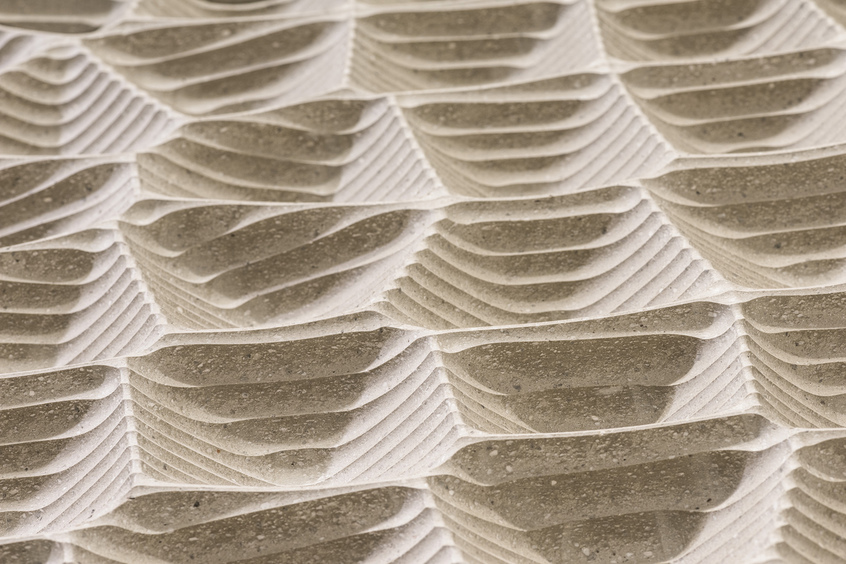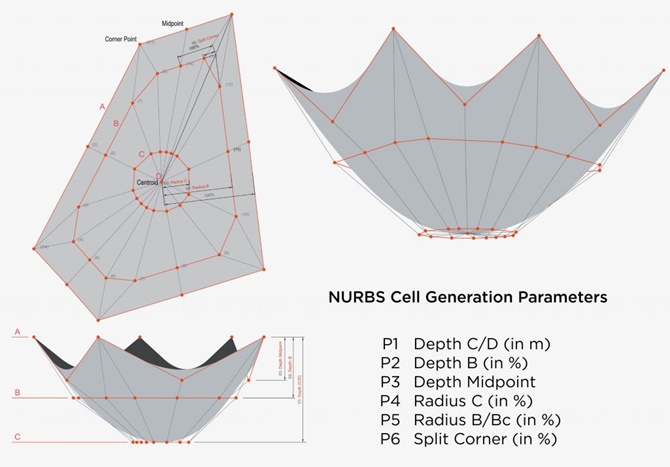The recently opened Elbphilharmonie concert hall in Hamburg was partially designed by algorithms.
Detached from the rest of the building for soundproofing reasons, the 10,000 panels that line the central auditorium are the result of parametric design, a process of creating multiple individual designs using algorithms.
A million individual cells ranging from four to 16cm long are cut out from the panels, which balance the sound and reverberation across the auditorium.
Deeper and wider cells are needed at the back of the hall, while smaller and shallower holes are located on the ceiling.
A similar technique has been used in the Neoclassical Wiener Musikverein venue, home of the Vienna Philharmonic orchestra.
The ivory coloured gypsum fiber acoustic panels contain a seashell motif and were designed by Swiss architect Herzog & De Meuron with help from German studio One to One.

Image courtesy of Johannes Arlt
Benjamin Koren, founder of One to One and writer of the algorithm that created the design, said: “It would be insane to do this by hand. That’s the power of parametric design.
“I hit play and it creates a million cells, all different and all based on these parameters.
“I have 100% control over setting up the algorithm, and then I have no more control.”
Yasuhisa Toyota, the acoustician on the project, built a 1/10 scale model of the hall interior and conducted acoustical experiments in the model to study more details about how sound would behave in the space.
Toyota said that “3D modelling was used to determine where to place joints in the panels of this material and then the panels were fabricated at an off-site factory”.
The vineyard style concert hall contains 2,100 seats rising up around the stage, 1,000 light bulbs made from hand blown glass and is located 50m above ground level in Hamburg’s historic port.
Although parametric design is thought to be a modern invention characterised by computer design systems and procedural generation, it has its roots in architectural tests by Sagrada FamÃlia designer Antoni GaudÃ.

Image courtesy of One by One
Gaudà preferred to use models instead of drawings as design tools and would use the traditional technique of hanging chains to form a catenary curve and load-bearing arch but would change the tension and compression of the structure, placing multiple arches on top of each other in the form of chains, changing and testing alternative parameters of a real world analog model in the way that software does today.
Gaudà would also create upside down models of his designs then picture them the right way up with mirrors. He would also colour in photographs of his wire frame designs to create solid model renderings.
Despite the individualistic design work on the project, it was delivered six years late and €600m over budget, with criticisms aimed at contractor Hochtief for “an unrealistically low bid” and Herzog & de Meuron for straying from the planning schedule.
Top image courtesy of Iwan Baan
Further Reading:
Comments
Comments are closed.







“Despite the individualistic design work on the project…” or because of?